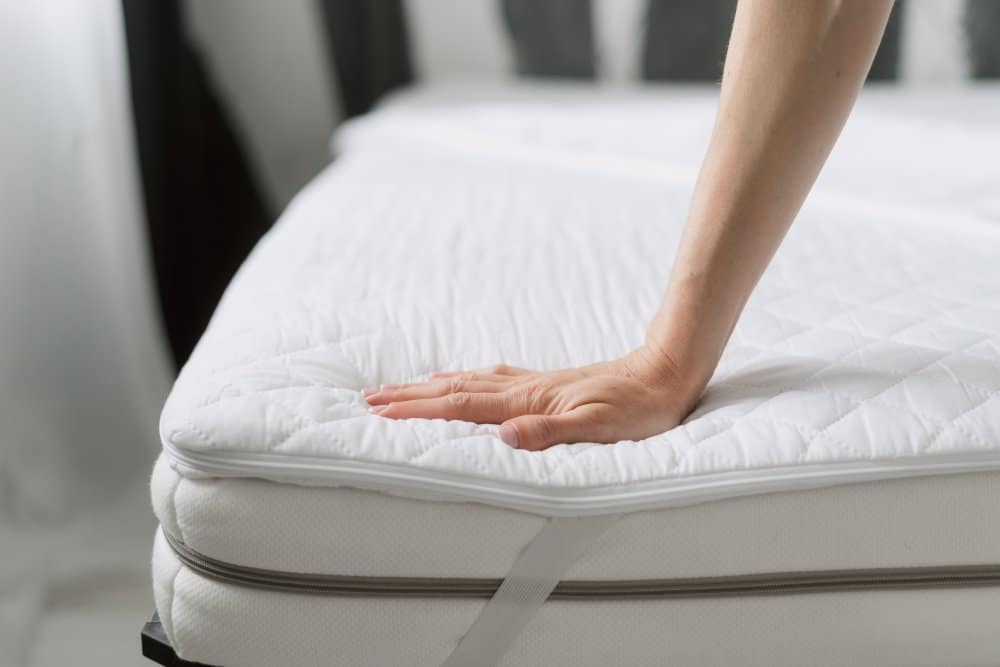There are a few important numbers or metrics to consider when purchasing a mattress, and one good example if you're looking for a memory foam mattress or any other variety that utilizes foam material is known as foam density. What is foam density and why is it important, and how is it calculated for any mattress with a foam surface?
At Sunset Bedding, we're proud to offer a wide range of mattresses for sale, including twin memory foam mattresses, full size memory foam mattresses and larger options like queen and king memory foam mattresses. Here are some basics on what foam density is, the ways it can impact mattress performance, and the simple method for calculating foam density in any mattress you're considering.

When we talk about foam density, we're essentially discussing how heavy a given type of foam is. Foam density is measured in pounds per cubic foot, abbreviated as PCF. In short, it refers to the weight of one cubic foot of foam material.
Foam density is a metric that's measured for any mattress that features foam, including not just memory foam but also latex and even polyurethane foam. Keep in mind that all foam mattresses are not created equal - different types of mattresses will have different density requirements to achieve optimal performance.
Density measurements, then, can range from the low end (referring to less weight per unit of volume) up to the high end (more weight per unit of volume). Our next section will go over how these different measurements may impact mattress performance and sleeper selection.
Here are some of the different ways foam density can inform mattress performance:
When it comes to pressure relief and related comfort areas that speak to the mattress's ability to conform to your body, high foam density mattresses tend to hold an edge. This is because higher density foams tend to be more responsive and contouring, allowing for better pressure relief and a more comfortable sleep.
Foam density can also play a role in how well a mattress isolates motion. Higher density foams tend to have better motion isolation capabilities, meaning you are less likely to feel movement from your partner or pet throughout the night. This can lead to a more restful sleep for both individuals sharing the bed.
In addition to comfort and support, foam density also impacts the overall durability of a mattress. Higher density foams tend to be more resilient and can better withstand daily wear and tear. This means your mattress may have a longer lifespan and maintain its shape and support for a longer period of time.
Foam density can also affect how well a mattress regulates temperature, and this is one area where cool sleepers may actually find more benefits in low density options. Low density foams have more space between foam cells, meaning they allow for better airflow and heat dissipation. This can help prevent the mattress from trapping heat and keep you cool throughout the night.
On the other hand, high density foams tend to be more dense and compact, which can lead to a warmer sleeping surface. If you are a warm sleeper or live in a hot climate, you may want to consider a mattress with lower foam density to help regulate your body temperature while you sleep.
As you may have guessed, higher density foam mattresses tend to be heavier than lower density ones. This is due to the compactness and amount of material used in the mattress. While this may not seem like a big concern, it's important to consider if you are someone who moves frequently or has difficulty lifting heavy objects.
Naturally, higher density foam mattresses are more expensive due to the amount of material used. However, it's important to consider the long-term investment and benefits of a higher density mattress. While you may be paying more upfront, these mattresses tend to last longer and provide better support and comfort over time.
As we noted above, foam density is a metric calculated in pounds per cubic food, or PCF. It's determined by finding the weight of a single cubic foot of foam, and dividing the entire weight of a foam layer by its volume.
So for example, if a layer of foam weighs 100 pounds and is 25 cubic feet in volume, the foam density would be calculated as follows:
100 pounds / 25 cubic feet = 4 PCF
Foam density measurements for mattresses tend to run between about 1 or 1.5 PCF up to 5 or higher, so in this example the density would be on the higher end. It's important to note, however, that what defines "high" or "low" density may also vary depending on the type of foam - this is an area a mattress professional can assist you with.
At Sunset Bedding, we're happy to assist clients with important themes like these for any mattress purchase. Contact us today to get started!